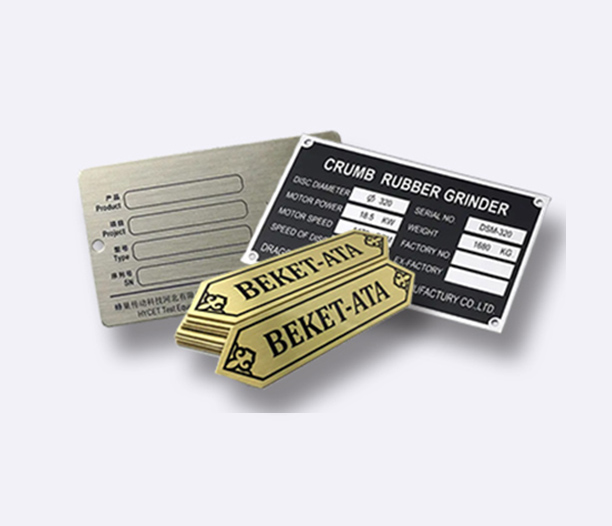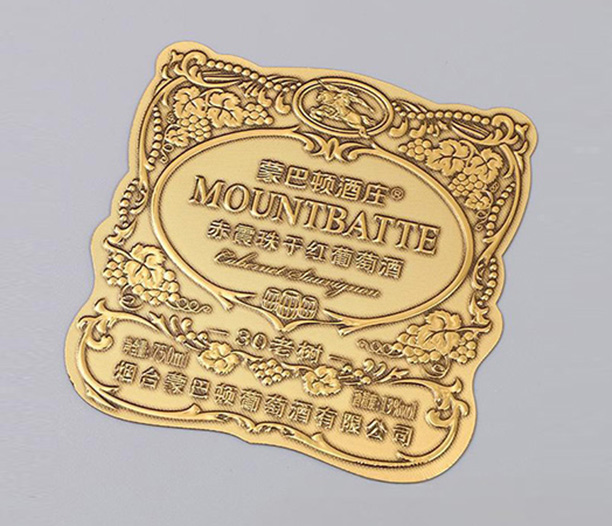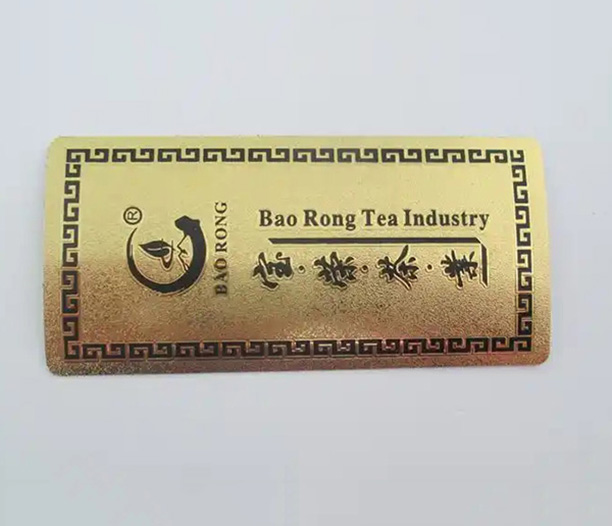When you think of durable identification solutions, what comes to mind? Perhaps it's the sleek, professional look of a metal nameplate adorning machinery, or the personalized touch on a gift that lasts a lifetime. Metal nameplate engraving is more than just etching words onto a surface; it's a craft that blends artistry with precision engineering. This process has evolved from traditional hand-engraving to advanced digital techniques, making it a go-to choice for industries and individuals alike. In this article, we'll delve into the intricacies of metal nameplate engraving, covering everything from the materials used to its wide-ranging applications. Whether you're a business owner seeking reliable asset labeling or someone looking to add a unique identifier to a prized possession, understanding the nuances of metal nameplate engraving can help you make informed decisions. Let's explore how this timeless method continues to shape our world, one engraved plate at a time.
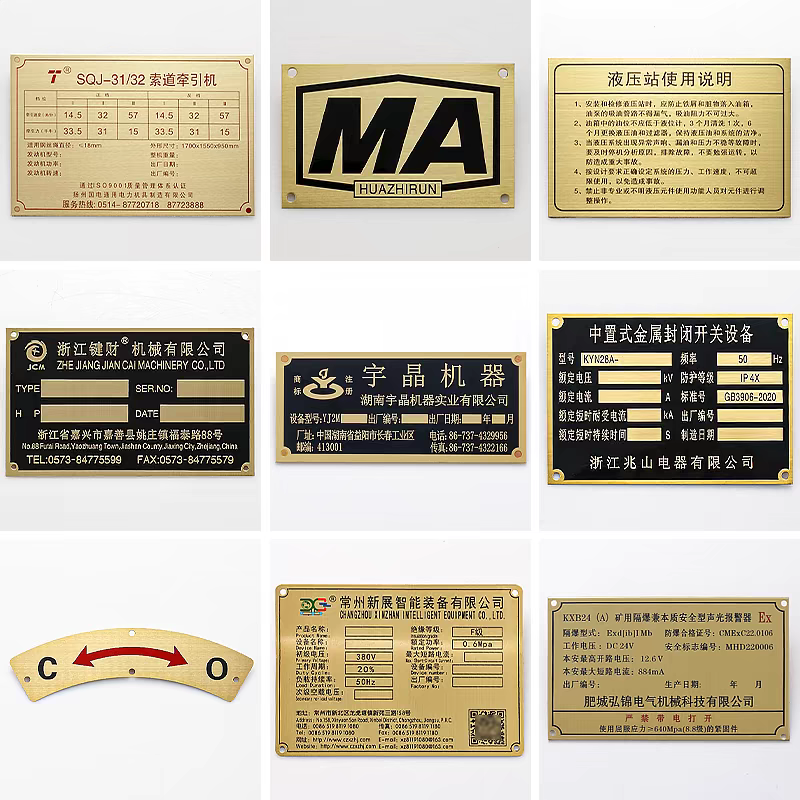
What is Metal Nameplate Engraving?
Metal nameplate engraving refers to the process of incising or carving designs, text, or graphics onto a metal surface to create a permanent, readable identifier. This technique has been used for centuries, dating back to ancient civilizations where metal plates served as markers for important artifacts or tools. Today, it involves specialized equipment and methods to ensure high precision and durability. The essence of metal nameplate engraving lies in its ability to produce marks that withstand environmental factors like moisture, heat, and physical wear. Common applications include industrial equipment labeling, commemorative plaques, and personalized items. By removing layers of metal to form characters, engraving creates a tactile finish that can be felt by touch, distinguishing it from other marking techniques. This method is favored for its longevity and resistance to fading, making it ideal for situations where legibility is critical over long periods. In essence, metal nameplate engraving combines functionality with aesthetics, providing a reliable solution for identification needs across various sectors.
Types of Metals Used in Engraving
The choice of metal plays a crucial role in the success of metal nameplate engraving, as different materials offer varying levels of durability, cost, and visual appeal. Aluminum is a popular option due to its lightweight nature, corrosion resistance, and affordability, making it suitable for indoor applications like office equipment or electronic devices. Stainless steel, on the other hand, is prized for its strength and resistance to rust, often used in harsh environments such as marine or industrial settings. Brass and bronze are favored for their classic, elegant appearance, frequently seen in decorative nameplates or awards, as they develop a patina over time that adds character. Other metals like copper and titanium may also be used, depending on specific requirements like conductivity or weight constraints. Each metal interacts differently with engraving tools; for instance, softer metals like aluminum allow for deeper cuts with less effort, while harder metals like steel may require more powerful equipment. When selecting a metal for nameplate engraving, factors such as exposure to elements, budget, and desired aesthetics should be considered to ensure the final product meets expectations. Ultimately, the right metal enhances the longevity and effectiveness of the engraved nameplate.
Engraving Techniques and Processes
Metal nameplate engraving encompasses a range of techniques, each suited to different needs and scales of production. Traditional methods include hand engraving, which involves skilled artisans using tools like burins or chisels to carve designs manually. This approach allows for intricate, custom work but is time-consuming and less consistent for large batches. In contrast, modern methods have revolutionized the field. Laser engraving uses focused beams of light to vaporize metal surfaces, resulting in precise, high-resolution marks without physical contact. This technique is ideal for complex logos or fine text and is commonly used in electronics and medical devices. Another method is mechanical engraving, which employs computer-controlled routers or mills to cut into the metal, offering robustness for industrial applications. Additionally, chemical etching involves applying acids to create patterns, though it's less common for nameplates due to environmental concerns. Each technique has its advantages; for example, laser engraving is highly efficient for detailed work, while mechanical methods excel in producing deep, durable marks. The choice of technique often depends on factors like material type, production volume, and desired finish. By understanding these processes, one can appreciate how metal nameplate engraving adapts to modern demands while maintaining its core principles of precision and permanence.
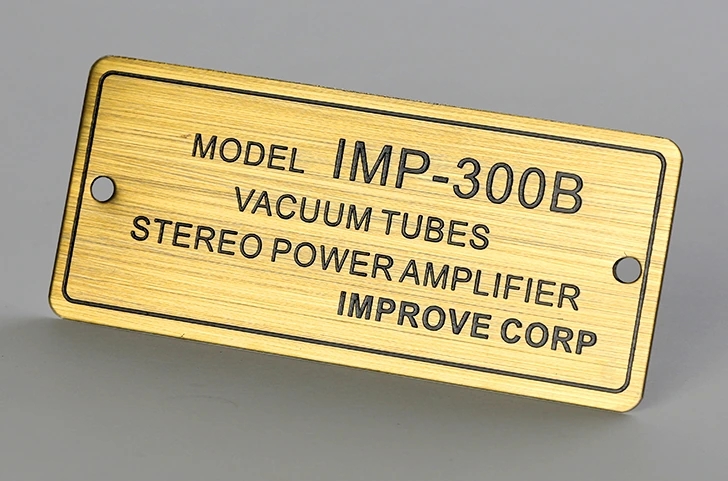
Applications in Various Industries
Engraved metal nameplates find utility across a diverse array of industries, thanks to their reliability and versatility. In the manufacturing sector, they are used to label machinery, tools, and components with serial numbers, safety instructions, or brand logos, ensuring traceability and compliance with standards. The aerospace and automotive industries rely on metal nameplate engraving for parts identification, where conditions like extreme temperatures and vibrations demand durable markings. In consumer goods, these nameplates add a touch of elegance to products like jewelry, watches, and appliances, enhancing brand identity and user experience. The construction field employs them for building plaques and equipment tags, providing long-lasting information in outdoor settings. Even in personal use, metal nameplate engraving is popular for custom gifts, pet tags, or memorials, offering a sentimental value that endures. Moreover, the medical industry uses engraved nameplates on devices and instruments for sterilization resistance and clear labeling. This widespread adoption highlights how metal nameplate engraving serves both functional and decorative purposes, adapting to specific industry needs while maintaining high standards of quality and durability.
Benefits of Choosing Engraved Metal Nameplates
Opting for metal nameplate engraving comes with numerous advantages that make it a preferred choice over alternative methods. Firstly, durability is a standout benefit; engraved marks are resistant to fading, scratching, and environmental damage, ensuring legibility for years, even in demanding conditions. This longevity reduces the need for frequent replacements, saving time and costs in the long run. Secondly, the precision of engraving allows for high-quality, crisp text and graphics, which is essential for compliance with regulatory standards in industries like healthcare or aviation. Aesthetically, engraved nameplates offer a professional, polished look that can be customized with various fonts, sizes, and finishes to match brand guidelines or personal preferences. Additionally, the process is environmentally friendly compared to methods involving inks or dyes, as it typically produces minimal waste. From a practical perspective, metal nameplate engraving provides excellent readability under different lighting conditions, thanks to the contrast created by the engraved grooves. This makes it ideal for safety labels or instructional plates where clarity is paramount. Overall, the combination of resilience, customization, and cost-effectiveness makes metal nameplate engraving a smart investment for anyone seeking reliable identification solutions.
Maintenance and Care for Longevity
To maximize the lifespan of engraved metal nameplates, proper maintenance is essential. Although they are designed for durability, regular care can prevent issues like corrosion or dirt buildup. Start by cleaning the nameplate gently with a soft cloth and mild soapy water, avoiding abrasive cleaners that could scratch the surface or degrade the engraving. For outdoor nameplates, periodic inspections for signs of wear, such as rust or discoloration, are recommended; applying a protective coating like clear lacquer can help shield against moisture and UV rays. In industrial settings, ensure that nameplates are not exposed to harsh chemicals without appropriate resistance, and consider the metal type when planning maintenance—for example, stainless steel may require less upkeep than brass. If damage occurs, professional re-engraving or repair services can restore readability. By following these simple steps, you can preserve the appearance and functionality of your metal nameplate engraving, ensuring it continues to serve its purpose effectively for years to come.
Metal nameplate engraving is a versatile and enduring solution that bridges the gap between practicality and artistry. From its roots in traditional craftsmanship to its modern applications in high-tech industries, this method offers unmatched durability, precision, and customization. By considering factors like metal types, engraving techniques, and maintenance, you can leverage the full potential of metal nameplate engraving for your specific needs. As technology advances, we can expect even more innovations in this field, making it an exciting area to watch. Whether for industrial use or personal projects, investing in quality engraving ensures that your identifiers stand the test of time.
Frequently Asked Questions
Q1: What is the typical lifespan of an engraved metal nameplate?
A1: The lifespan of an engraved metal nameplate depends on factors like the metal type, environment, and maintenance. Generally, well-maintained nameplates made from durable metals like stainless steel or aluminum can last decades, even in harsh conditions, due to the permanent nature of the engraving process.
Q2: Can metal nameplate engraving be used for colorful designs?
A2: Yes, metal nameplate engraving can incorporate colors through techniques like infilling, where paints or enamels are applied into the engraved grooves. This allows for vibrant designs while maintaining the durability of the metal base, though the color may require occasional touch-ups over time.
Q3: How does engraving compare to printing on metal nameplates?
A3: Engraving involves physically cutting into the metal, creating a permanent, tactile mark that resists wear and fading. In contrast, printing uses inks or dyes on the surface, which can be less durable and prone to peeling or smudging. Engraving is often preferred for long-term applications where reliability is key.
Q4: What file formats are needed for custom metal nameplate engraving?
A4: For custom engraving, vector files such as AI, EPS, or PDF are ideal because they allow for scalable, high-resolution designs without loss of quality. Raster images like JPEG can be used but may require conversion for optimal results, especially with intricate details.
Q5: Is metal nameplate engraving environmentally friendly?
A5: Yes, metal nameplate engraving is generally eco-friendly, as it produces minimal waste compared to processes involving chemicals or disposable materials. Many engraving techniques, like laser engraving, use energy-efficient equipment and can be paired with recyclable metals, reducing the overall environmental impact.



